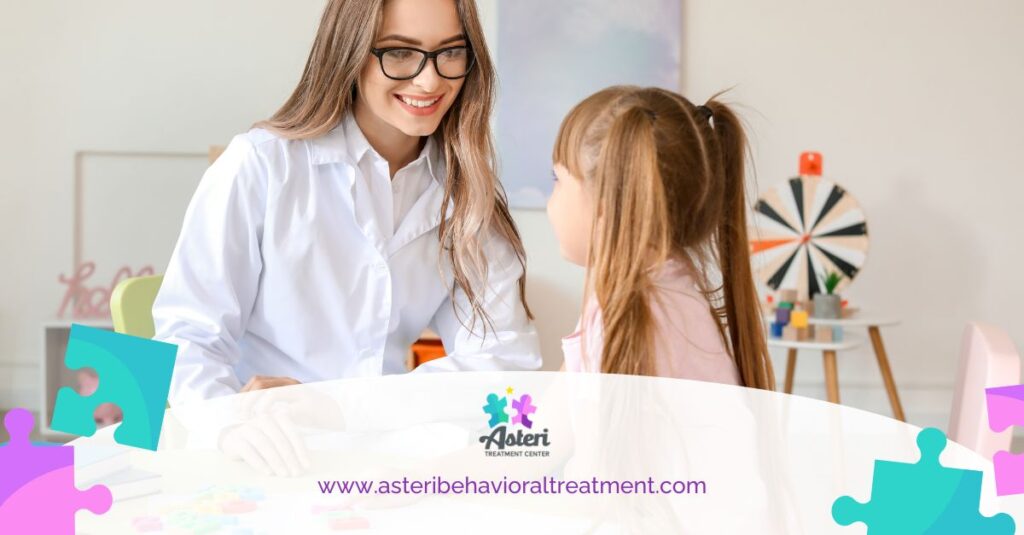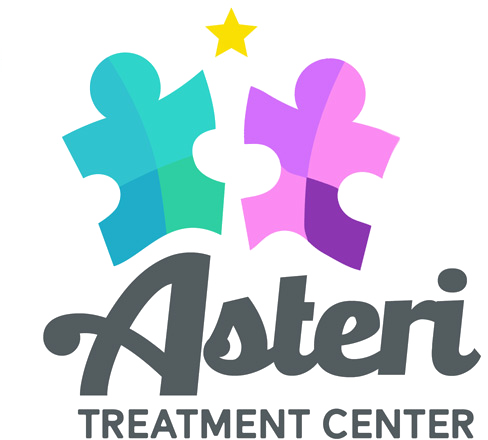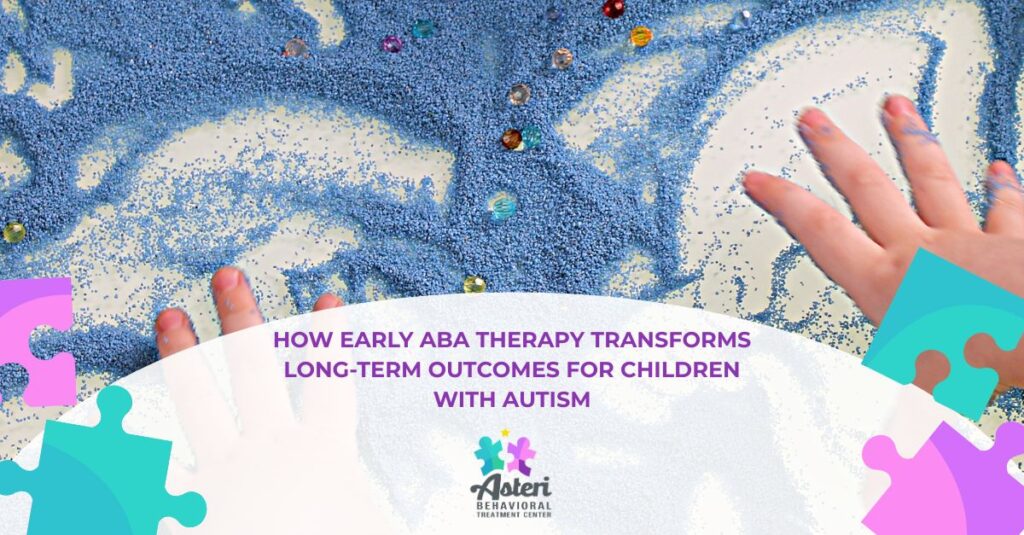When parents receive an autism diagnosis for their child, one of the first questions they ask is: “What can we do to help?” The answer often points to Applied Behavior Analysis (ABA) therapy, particularly when started early. Research consistently shows that early intervention ABA can dramatically improve a child’s developmental trajectory, creating benefits that last well into adulthood.

Understanding how early ABA therapy works and why timing matters can help parents make informed decisions about their child’s treatment plan. This comprehensive guide explores the science behind early intervention, the specific areas where children see the most improvement, and what parents can expect from the process.
What Makes Early ABA Therapy So Effective?
Early ABA therapy leverages a critical period in child development when the brain exhibits maximum plasticity. During the first few years of life, neural pathways form rapidly, making it easier for children to learn new skills and modify challenging behaviors.
ABA therapy uses evidence-based techniques to teach communication, social interaction, and daily living skills while reducing problematic behaviors. When implemented early—ideally before age four—these interventions can help children develop essential skills during their most formative years.
The intensive nature of early ABA programs, typically involving 20-40 hours per week, allows for consistent reinforcement and practice. This frequency ensures that new skills become well-established patterns rather than isolated learned behaviors.
Communication Breakthroughs That Last a Lifetime
One of the most significant long-term benefits of early intervention ABA lies in communication development. Many children with autism struggle with both verbal and non-verbal communication, but early therapy can create remarkable improvements.
Building Foundational Language Skills
Early ABA therapy focuses on developing pre-linguistic skills first—eye contact, joint attention, and imitation. These building blocks create the foundation for more complex communication later. Children learn to request items they want, express their needs, and eventually engage in back-and-forth conversations.
Studies tracking children who received early ABA therapy show that 47% achieved significant improvements in language skills within two years of starting treatment. These gains often continue expanding throughout childhood and adolescence.
Reducing Communication Frustration
When children can’t express their needs effectively, frustration often leads to challenging behaviors like tantrums or aggression. Early ABA therapy teaches alternative communication methods, including picture exchange systems, sign language, or assistive technology devices.
As communication skills improve, challenging behaviors typically decrease. Children who learn to express “I need a break” are less likely to resort to disruptive behaviors when feeling overwhelmed.
Social Skills Development Through Early Intervention
Social interaction challenges represent another core area where early intervention ABA creates lasting positive changes. Young children naturally learn social skills through observation and interaction, but children with autism often need explicit instruction in these areas.
Peer Interaction and Friendship Building
Early ABA programs teach children how to initiate play with peers, take turns, share toys, and respond appropriately to social cues. These skills become increasingly important as children enter school environments.
Children who receive early ABA therapy demonstrate better social integration in mainstream classrooms. They’re more likely to form friendships, participate in group activities, and navigate social situations independently.
Understanding Social Expectations
Early intervention helps children learn unspoken social rules—understanding personal space, recognizing when others want to end a conversation, or knowing how to greet different people appropriately. These subtle but crucial skills significantly impact long-term social success.
Behavioral Improvements That Create Opportunities
Challenging behaviors can limit a child’s access to educational and social opportunities. Early ABA therapy addresses these behaviors while they’re still developing patterns, making intervention more effective.
Reducing Repetitive Behaviors
While some repetitive behaviors (stimming) can be self-soothing and don’t necessarily need intervention, others can interfere with learning or social interaction. Early ABA therapy helps identify which behaviors to address and teaches alternative coping strategies.
Teaching Self-Regulation Skills
Early intervention focuses heavily on helping children recognize their emotional states and develop appropriate responses. Children learn coping strategies for anxiety, frustration, and sensory overload—skills that prove invaluable throughout their lives.
Creating Structure and Predictability
ABA therapy introduces consistent routines and clear expectations, which many children with autism find comforting. These structured approaches often reduce anxiety and create environments where learning can flourish.
Academic Success Through Early Preparation
Children who receive early intervention ABA often demonstrate better academic outcomes throughout their school years. The skills developed in therapy—attention, following directions, task completion, and social interaction—directly translate to classroom success.
Pre-Academic Skill Development
Early ABA programs often include pre-academic skills like identifying letters, numbers, colors, and shapes. More importantly, they teach children how to attend to instruction, work independently, and ask for help when needed.
Mainstream Education Opportunities
Research indicates that children who receive intensive early ABA therapy are more likely to be placed in mainstream educational settings rather than requiring specialized classrooms. This integration provides additional opportunities for social learning and academic growth.
Independence and Daily Living Skills
Long-term success often depends on the ability to manage daily tasks independently. Early ABA therapy addresses these practical skills alongside communication and social development.
Self-Care Milestones
Programs typically include toilet training, dressing, grooming, and feeding skills. Mastering these basics early creates a foundation for greater independence later in life.
Safety Awareness
Early intervention teaches crucial safety skills—understanding traffic signals, stranger awareness, and emergency procedures. These lessons become increasingly important as children gain more independence.
The Research Behind Early Intervention Success
Multiple studies support the effectiveness of early intervention ABA. The landmark UCLA Young Autism Project found that children who received intensive early ABA therapy showed average IQ increases of 20-30 points, with many achieving typical developmental milestones.
More recent research confirms these findings. A 2018 study published in the Journal of Autism and Developmental Disorders followed children for five years after early ABA intervention. Results showed maintained improvements in communication, social skills, and adaptive behavior well into elementary school years.
The National Research Council recommends that children with autism receive at least 25 hours per week of structured intervention, emphasizing the importance of early, intensive programming.
What Parents Can Expect During Early Intervention
Starting early ABA therapy can feel overwhelming for families, but understanding the process helps set realistic expectations.
Initial Assessment and Goal Setting
Programs begin with comprehensive assessments to identify each child’s strengths and areas needing support. Goals are individualized and regularly updated as children progress.
Family Involvement and Training
Successful early intervention requires active family participation. Parents learn to implement ABA strategies at home, ensuring consistency across environments.
Progress Monitoring and Adjustments
Quality programs continuously collect data on child progress and adjust interventions accordingly. This evidence-based approach ensures that therapy remains effective and relevant.
Overcoming Common Concerns About Early ABA
Some parents worry about the intensity of early ABA programs or question whether young children can handle structured therapy. Research consistently shows that high-quality, play-based ABA programs are both effective and enjoyable for children.
Addressing Intensity Concerns
While 25-40 hours per week sounds extensive, quality programs break this time into manageable segments and incorporate play-based learning. Children often don’t realize they’re in “therapy” because activities feel like structured play.
Ensuring Natural Learning Opportunities
Modern ABA emphasizes natural learning opportunities rather than rigid table-top instruction. Therapy might occur during snack time, playground activities, or family routines.
Making the Right Choice for Your Child
At Asteri, we know that you have many choices when it comes to therapy. That’s why we do as much as possible to make sure that we stand out from the rest. Our commitment to evidence-based practices, family-centered approaches, and individualized programming creates the foundation for lasting positive outcomes.
Early intervention ABA therapy offers children with autism their best opportunity for long-term success. The communication skills, social abilities, and behavioral improvements developed during these crucial early years create ripple effects that benefit children throughout their lives. While the journey requires dedication and commitment from families, the research clearly demonstrates that early investment in quality ABA programming pays dividends for years to come.
The decision to pursue early intervention represents hope—hope for improved communication, meaningful relationships, greater independence, and a brighter future. With the right support and evidence-based intervention, children with autism can achieve remarkable progress and reach their full potential.

